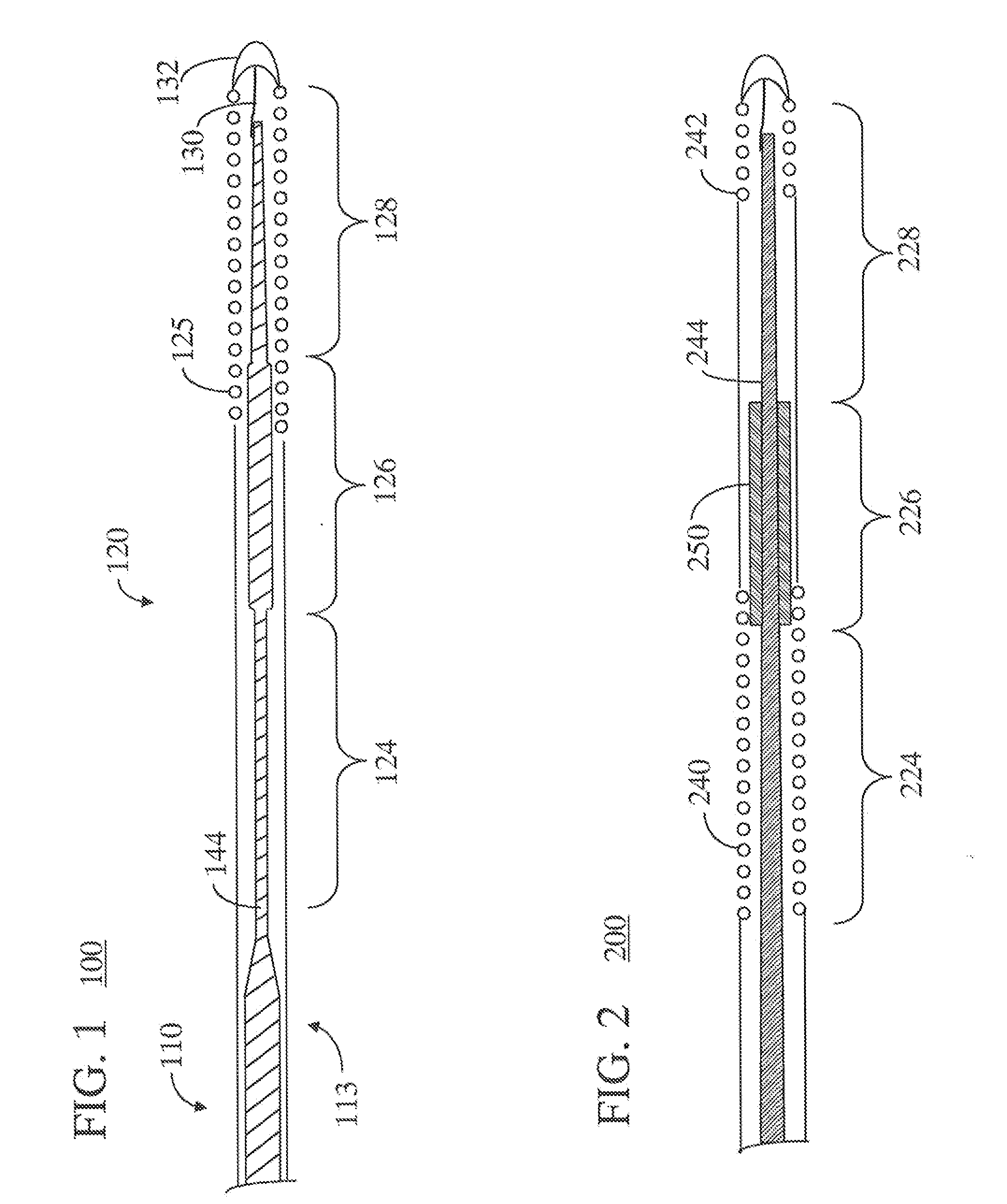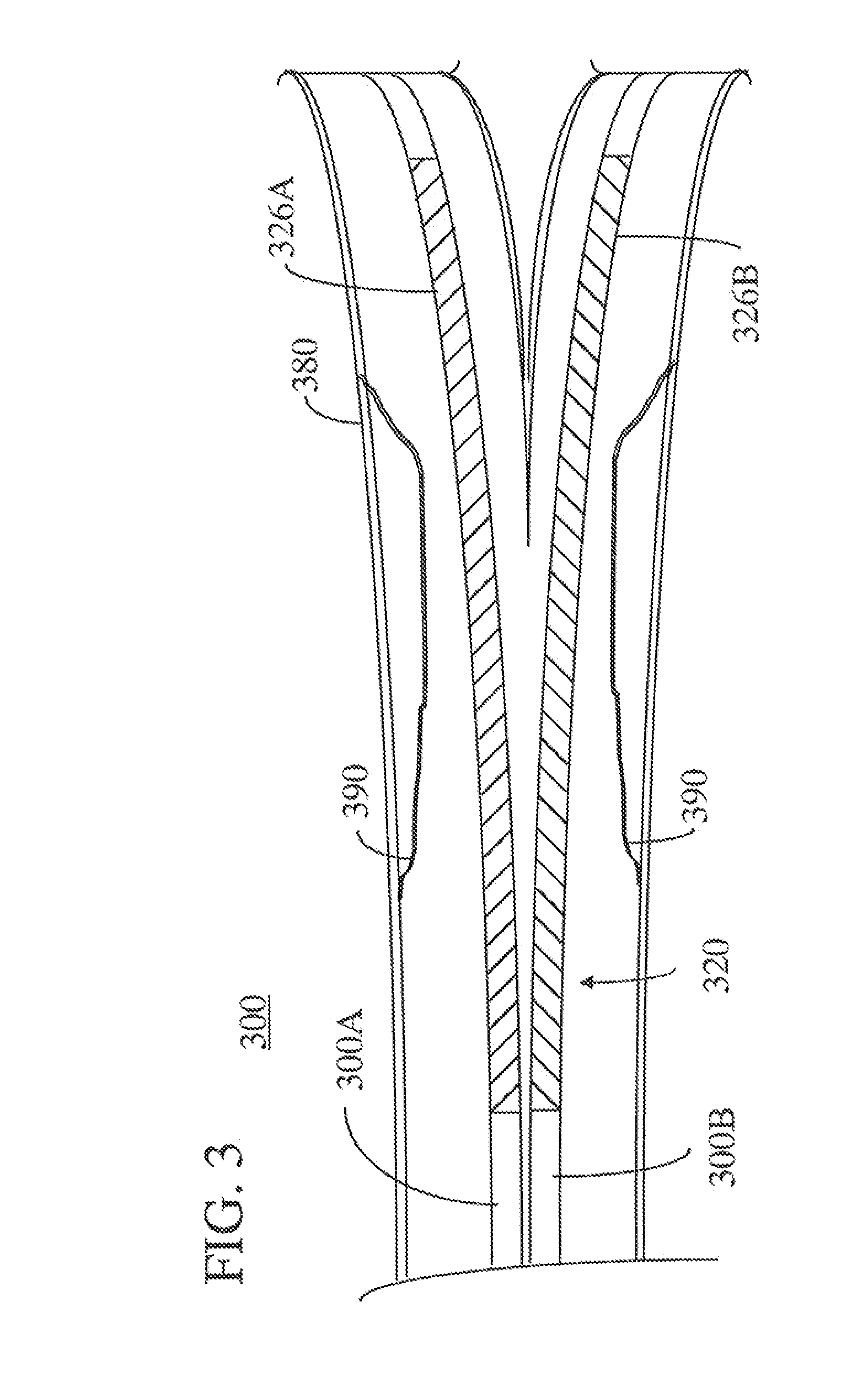Method of using a guidewire with stiffened distal section
a technology of distal section and guidewire, which is applied in the field of medical guidewires, can solve the problems of permanent deformation of the guidewire, inability to negotiate highly tortuous vasculature, and the inability of the distal section to move in the desired direction when steered,
- Summary
- Abstract
- Description
- Claims
- Application Information
AI Technical Summary
Benefits of technology
Problems solved by technology
Method used
Image
Examples
Embodiment Construction
[0014]Throughout this specification, like reference numbers refer to like structures. The terms “distal” and “proximal” are used in the following description with respect to a position or direction relative to the treating clinician. “Distal” or “distally” are a position distant from or in a direction away from the clinician. “Proximal” and “proximally” are a position near or in a direction toward the clinician.
[0015]Generally, steerable guidewires of the present invention are of a length and dimension typical of conventional guidewires. The guidewires of the present invention have a proximal stiff section and a softer more flexible distal section. Typically, the guidewires will have a length in the range of about 170 to 300 cm and a diameter in the range of about 0.30 mm (0.012 inch) to about 0.89 mm (0.035 inch). In one example, a typical diameter for guidewires used in catheterization and treatment of coronary arteries is 0.36 mm (0.014 inch). In order to provide a more flexible ...
PUM
 Login to View More
Login to View More Abstract
Description
Claims
Application Information
 Login to View More
Login to View More - R&D
- Intellectual Property
- Life Sciences
- Materials
- Tech Scout
- Unparalleled Data Quality
- Higher Quality Content
- 60% Fewer Hallucinations
Browse by: Latest US Patents, China's latest patents, Technical Efficacy Thesaurus, Application Domain, Technology Topic, Popular Technical Reports.
© 2025 PatSnap. All rights reserved.Legal|Privacy policy|Modern Slavery Act Transparency Statement|Sitemap|About US| Contact US: help@patsnap.com



